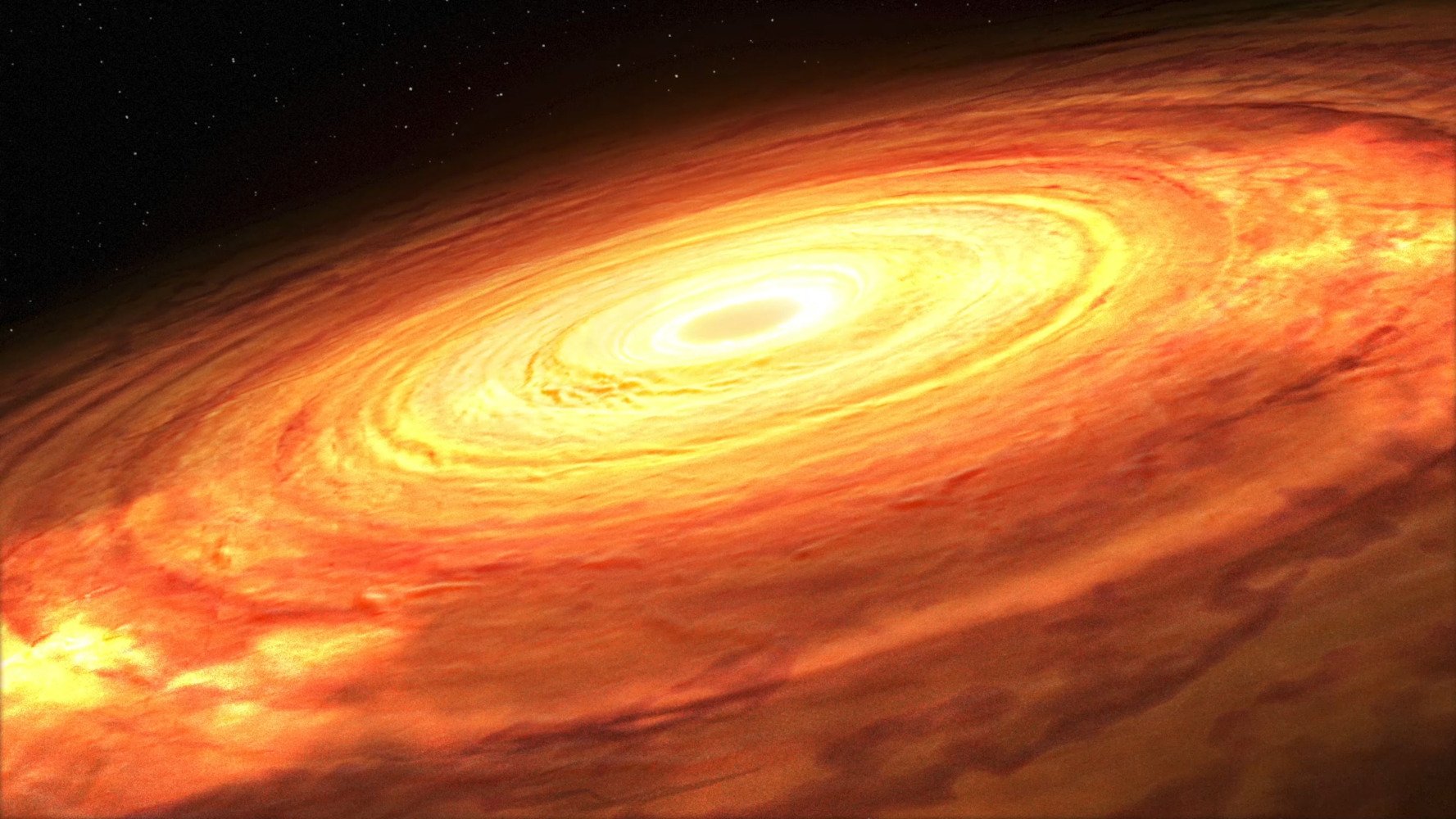How heavy are supermassive black holes, which are often invisible in the cores of galaxies? According to a study, the flash of light from disks of matter around black holes reflects their mass. This connection offers a new way to characterize the mysterious gravitational giants with the help of visual observations. This method could also help understand poorly understood processes in accretion disks, astronomers say.
Their gravitational force is so strong that even light does not escape it: due to their amazing physical properties and cosmic importance, black holes are a particular focus of astrophysics. One of their audiences concluded from their impact on the environment. They come in three categories. There are stellar black holes with masses up to ten times the mass of the sun, medium-mass samples weighing about 100 to 100,000 times the mass of our sun, and then there are the ultimate gravitational monsters: supermassive black holes. It is millions of times the mass of the Sun and is usually located at the center of galaxies.
The giants among black holes in particular still pose many mysteries to astronomers. It is also not clear how they form and grow. In order to investigate this question, it would be useful to be able to use another method to determine their masses. A research team led by the University of Illinois at Urbana-Champaign now shows such a possibility. Astronomers initially focused on active supermassive black holes (SMBHs) at the center of galaxies — or disks of matter that “feed” from them. These accretion disks are the size of our solar system and can emit powerful radiation due to “eating” processes. At times it can even outshine the glare of an entire galaxy.
Are there distinct patterns in the flickering?
The light of the “hole lining” is known to flicker: due to physical processes that are not yet fully understood, the radiation fluctuates over time from hours to decades. “There have been attempts to establish a relationship between observed blinking and the mass of SMBHs, but the results have been inconclusive,” says first author Colin Burke. For their study, he and colleagues compiled a data set of 67 active SMBHs with known masses in order to be able to analyze the radiation variance patterns on a larger scale.
As the researchers report, they have now been able to identify patterns that clearly show a link between the flash and the mass of SMBHs: they have identified a distinct time course in the flash that is closely related to the known features of the black hole in question. They then extended their research to the growth of white dwarf stars, which can also contain flicker accretion disks. These are remnants of stars from the mass of our sun. Scientists have found that the same flash-to-mass ratio is also present in these celestial bodies, even though white dwarfs are millions to billions of times less massive than SMBHs.
The possibility of astronomy
“These results indicate that the processes driving the flash during accretion are global – regardless of whether the central object is a supermassive black hole or a much lighter white dwarf,” says co-author Yue Shen. His colleague Yan Fei Jiang from the Center for Computational Astrophysics in New York adds: “The relationship between the observed flash of light and the fundamental properties of the center can help us better understand accretion processes.”
As the scientists point out, the findings could, above all, shed light on hitherto unexplored intermediate-size black holes (IMBHs): “Now that the correlation is clear, we can predict the flickering signal of intermediate-size black holes samples might look like” , says Burke. In this context, scientists now hope to have data from the Sky Survey by the Legacy Survey of Space and Time (LSST) project as of the end of 2023.” Co-author of Shen Liu University in Illinois says: “IMBHs have the potential to detect and study This mysterious group of long-awaited black holes.”
Video: Artist’s impression of a flash of light in a supermassive black hole. (Credit: The Mark A. Garlick/Simmons Foundation)
Source: University of Illinois at Urbana-Champaign, article: Science, doi: 10.1126/science.abg9933

“Alcohol buff. Troublemaker. Introvert. Student. Social media lover. Web ninja. Bacon fan. Reader.”






More Stories
Ecologists Celebrate New Xesap National Park in Laos | Science
Is the wrong diet making you forget?
We can study it with a new telescope.